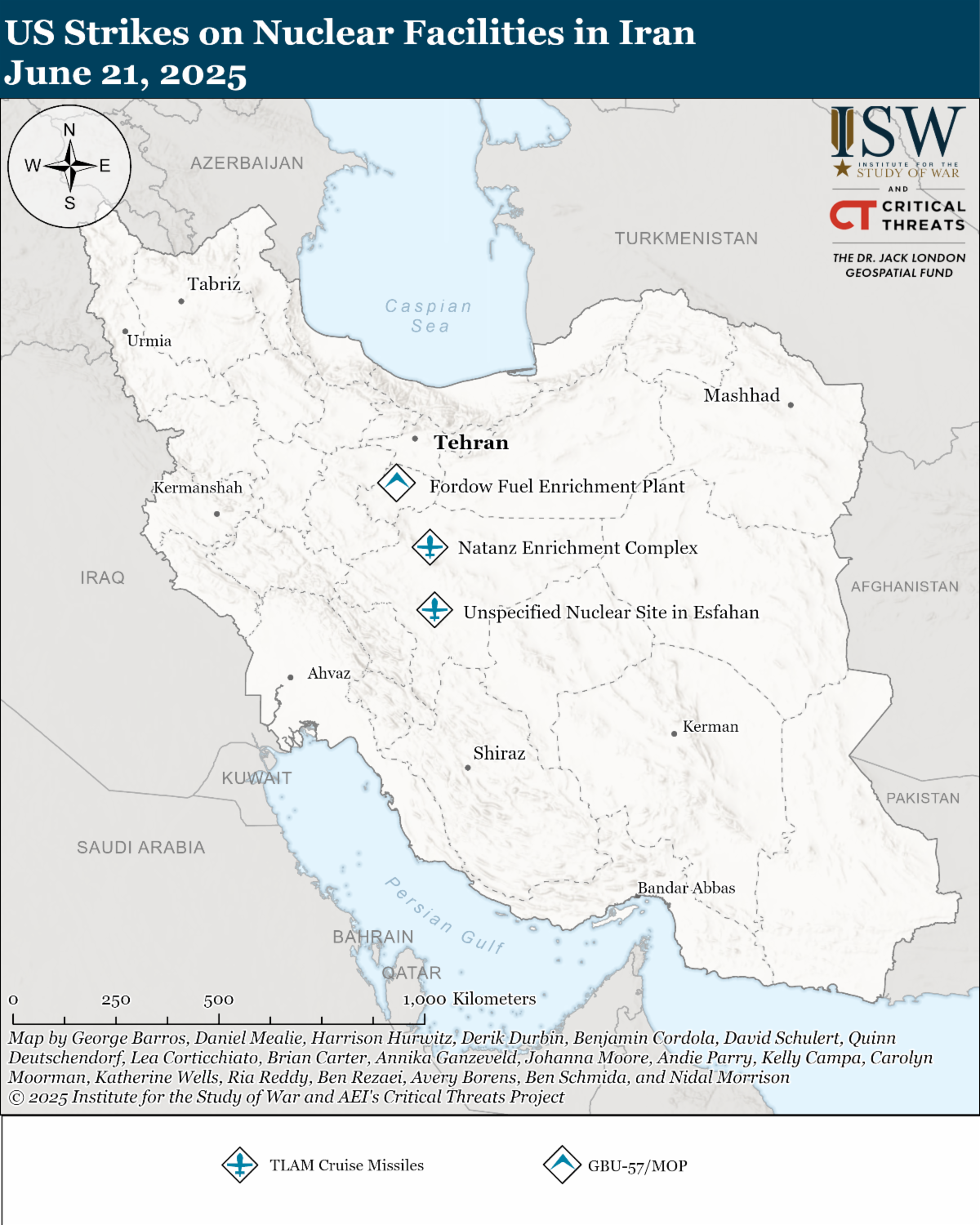Preliminary intelligence assessments suggest the US and Israeli strikes on Iranian nuclear facilities caused serious damage to the Fordow Fuel Enrichment Plant (FFEP). The New York Times published a June 25 report on a leaked, low-confidence US intelligence assessment of the recent US strikes on the Fordow Fuel Enrichment Plant. The New York Times and other Western media outlets cite very little direct information from the report. Unspecified sources, in their characterization of the assessment, said that the Defense Intelligence Agency (DIA) assessed that the US and Israeli strikes. Unspecified officials added that the findings indicated that US bunker-buster bombs sealed entrances to two unspecified nuclear sites but failed to “collapse their underground buildings.”
The destruction of the centrifuges and equipment inside does not necessarily require the collapse of the facility itself. The Institute of Science and International Security, a nuclear nonproliferation think tank that has long studied the Iranian nuclear program, assessed that it was very likely the strikes destroyed or damaged most of the centrifuges at Fordow on the basis of the impact locations and the effects of the blast waves. It is notable in the context of the leaked US assessments that the Institute did not assess the damage on the basis of whether facilities “collapsed.” This is consistent with claims by other unspecified officials to the New York Times, who said that the Fordow, Natanz, and Esfahan nuclear facilities had all suffered “moderate to severe damage.” CTP-ISW has no basis for forming an independent assessment of the damage from US and Israeli strikes at these three nuclear facilities. Early Israeli assessments placed more confidence in the damage to enrichment facilities. The Israel Atomic Energy Commission separately assessed that the US strike on Fordow destroyed the site’s critical infrastructure and "rendered the enrichment facility inoperable." US President Donald Trump told reporters on June 25 that Israeli agents concluded that Fordow suffered ”total obliteration” after visiting the site, suggesting that Israeli assessments have been formed with intelligence collected by Israeli agents in Iran.
A conclusive battle damage assessment of nuclear facilities will take time, given the buried nature of Iran’s nuclear sites and limited on-site access. A US nuclear weapons expert stated on June 24 that US and Israeli strikes likely destroyed 20,000 centrifuges at Natanz and Fordow and severely damaged weaponization infrastructure. The expert stated that the early, low-confidence assessment ”focused too narrowly” on breakout timelines. Breakout refers to the time required to enrich 90 percent enriched uranium (also known as weapons-grade uranium). Weaponization requires one to build nuclear weapons. Axios reported on June 25 that intercepted communications suggested Iranian military officials have delivered false situation reports to senior Iranian leaders to downplay the extent of the damage, citing an unspecified Israeli source. This fact is notable because the leaked US intelligence assessment reportedly relied in part upon signals intelligence.
Key Takeaways:
- A leaked, low-confidence US intelligence assessment found that the US and Israeli strikes caused “moderate to severe” damage to Iran’s nuclear facilities, but that they did not “collapse” the facility. The destruction of the centrifuges and equipment inside does not necessarily require the collapse of the facility itself. A conclusive battle damage assessment of nuclear facilities will take time, given the buried nature of Iran’s nuclear sites and limited on-site access.
- Senior Iranian leadership suggested that Iran may not be willing to cooperate with various international organizations and treaties in the future, despite Iran’s historic and current non-adherence to such agreements.
- The Iranian regime is prioritizing regime security in the wake of the Iran-Israel War. The regime has arrested hundreds of Iranians, and it has focused its efforts on Kurdish areas.
| 




 [국방부] '유연한 공감형 ESFP' VS '엄격한 관리자 ESTJ' 군인들...
[국방부] '유연한 공감형 ESFP' VS '엄격한 관리자 ESTJ' 군인들...
 [ISW] 이란 업데이트 특별 보고서, 2025년 6월 24일, 저녁 에디션
[ISW] 이란 업데이트 특별 보고서, 2025년 6월 24일, 저녁 에디션